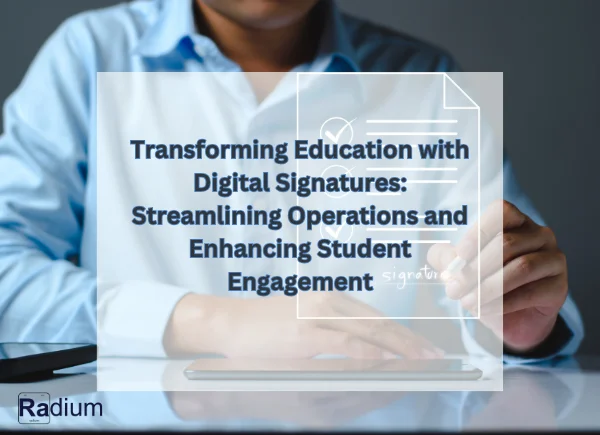
Schools are utilizing technology more and more in the modern educational environment in order to improve efficiency and concentrate less on routine work and more on important learning activities.An online learning environment is something that more and more tech-savvy parents, educators, and students anticipate.The education industry is incorporating digital signatures at both the administrative and instructional levels in order to satisfy these objectives and accomplish full digitalization. Electronically signing documents, gaining access to student information, and managing different administrative responsibilities are all made possible by digital signatures.
For the Beginning of the 2020–2021 school year, schools affiliated with the Central Board of Secondary Education are required to publish registration data online rather than mailing paper copies to regional offices, per a directive from the CBSE. For efficiency and accuracy, this digital submission is made; schools are encouraged to save a printout for their records. Under the "Organization B" class, schools must additionally get digital signatures from approved agencies from the principal or head of school.
The advantages of digital signatures in the classroom
-Streamlining Operations: Digital signatures reduce paperwork significantly across various school processes like student applications, issuance of documents (e.g.,administrative permissions, report cards, and transfer certificates. Time and effort are saved as a result of the streamlined processes.
-Improved Student Interaction: Students choose internet channels for communication and commerce. Digital signatures meet this desire by making it easier for students to communicate with educational institutions online.
-Achieving Total Digitization: Although a large number of educational institutions have fully digitalized the majority of their processes, some still require paper documents for approval. Schools can move toward a fully digital environment by substituting digital signatures for manual approval procedures.
Digital signatures enhance data security, operational effectiveness, and regulatory compliance. The smooth integration of digital contacts in the classroom enables educational establishments to adapt to the constantly evolving requirements of both parents and pupils.
Schools connected with the CBSE may modernize their administrative processes, improve communication with stakeholders, and create a more effective and responsive learning environment by implementing digital signatures. This change not only promotes the educational institution's dedication to innovation and excellence, but it also conforms to worldwide digital trends.
The future of digital education is bright, and it will soon be the traditional modes of learning! As mobile devices are being adapted by everyone, it becomes possible for more people to gain access to online learning. Immediately as the technology further improves and keeps on evolving, it will challenge people, increasing the democratization process of one's learning, enabling more innovative elements to be experienced, such as the virtual and augmented realities that have been brought forth.
As a result, digital education would redefine the education system in India because an individual would have access to learning materials and resources no matter where they are in the country. The four walls of the conventional classroom will not be the only habitat for learning in the coming days due to innovation in digital education, as it allows students to learn their subjects at their convenient pace and time, with accessibility being easy.
Digital Education is now a spiral development with technology and the internet that obliges us to reconsider how we learn and how we teach. The digital education is full of possibilities for personalized learning, which would offer more options for flexibility and responsiveness toward the diverse learning needs. Digital education in India can help break all barriers and bridge the gap to provide an inclusive, student-centric education system.
During the 1980s, a former president of Atari, Ron Gordon, at that time started one pioneering effort, the Electronic University Network (EUN) in 1983. The aim was to make online courses accessible for people with personal computers.